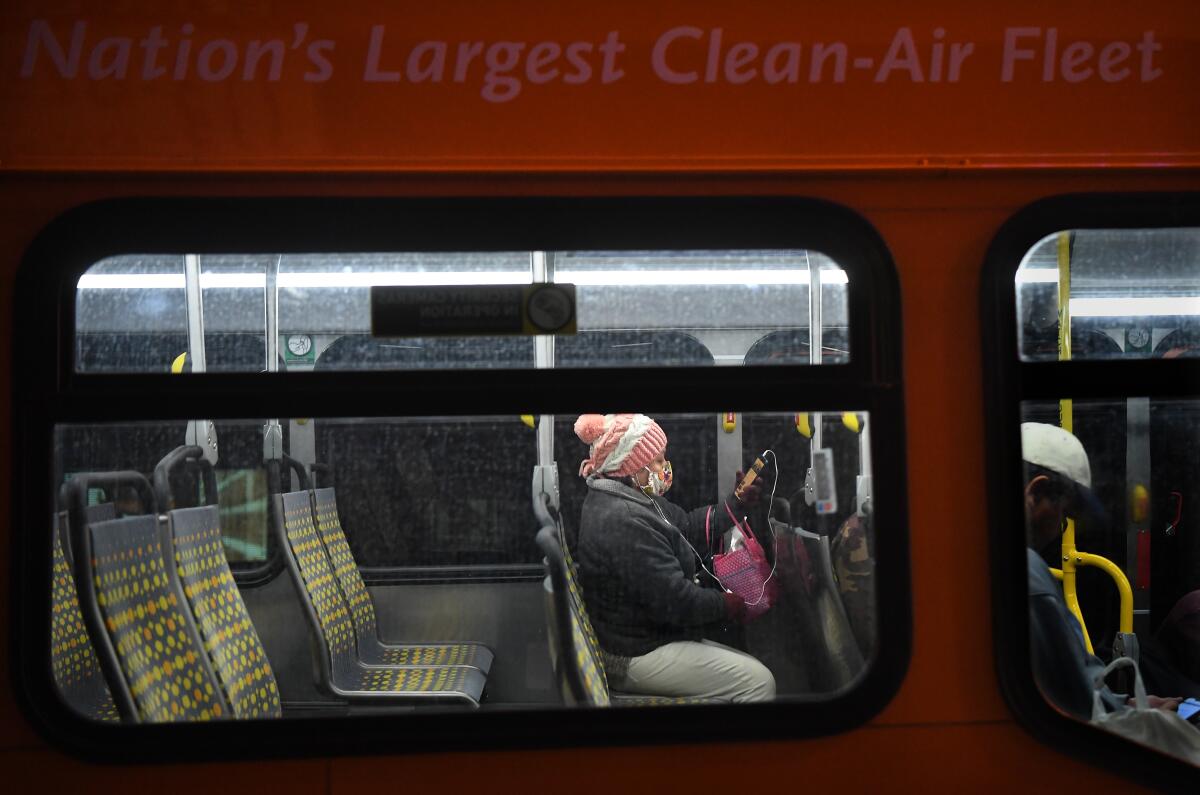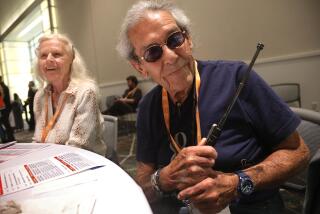Editorial: Transit is in a death spiral. Better service, bus lanes and other smart investments can save it

Here’s one more way that COVID-19 could leave a lasting mark: The pandemic has decimated public transit.
Without swift action to restore bus and rail service and a serious commitment to building transit-friendly communities, Los Angeles will suffer from ever-worsening traffic, air pollution, carbon emissions and inequality long after the coronavirus is contained.
L.A. is not alone. Public transit systems across the country are suffering. Boston, New York City and San Francisco, to name a few cities, are preparing to slash bus and rail service and possibly lay off workers because of plummeting revenue. And it’s unclear when — or if — the systems will return to normal.
More people are working from home now, and they’ll continue to do so for the foreseeable future. Many other once-regular transit riders are choosing to drive, perhaps to take advantage of the faster commutes or to avoid being in close quarters with strangers. The riders still taking the bus and train have had to deal with service cuts and sometimes crowded conditions.
Public transit was already struggling in many cities before the pandemic. COVID-19 could hasten a death spiral if agencies are forced to continue cutting service and sacrificing riders. The biggest losers would be the most vulnerable residents, including low-income workers, the disabled and students. The nation also needs strong transportation systems to help cut vehicle emissions and fight climate change. Once in office, President-elect Joe Biden and his pick for Transportation secretary, Pete Buttigieg, will have to move quickly, along with Congress, to bolster public transit systems.
The Los Angeles Metropolitan Transportation Authority is actually in better shape financially than many other cities’ systems. Voters over the years have approved four sales taxes that make up 70% of Metro’s revenue. Although the agency still had to cut its budget by 17%, when the economy rebounds, so will Metro’s funding stream.
Nevertheless, the pandemic could worsen an existential crisis in L.A.’s transportation system caused by a years-long decline in ridership, which slumped even as transit investment increased — partly because Southern Californians were buying cars in record numbers. The coronavirus drove down all modes of commuting, but vehicle traffic has rebounded faster than transit ridership. By August, people were driving almost as much as before the pandemic, while bus and rail ridership remained at 50% of their pre-COVID levels.
The fear is that the pandemic could leave L.A.’s public transit system hollowed out while filling the roads with more and more cars, increasing emissions, worsening congestion and making travel more dangerous for bicyclists and pedestrians.
It doesn’t have to be that way. For the last nine months, a recovery task force of Metro personnel has been working on ideas that could help the region emerge from the pandemic with a better and more equitable transportation system.
The task force urges Metro’s governing board to enact policies that — with the cooperation of cities — could keep in place the best of the pandemic-induced transportation changes. Encouraging companies to let workers telecommute would help ease congestion. Creating “Slow Streets” that are closed to through traffic would let more people bike and walk safely in their communities. And offering incentives such as free transit passes to households that get rid of one or more of their cars could encourage people to drive less.
Ultimately, the post-pandemic transportation system has to reward transit riders, bicyclists and pedestrians with safe, efficient and comfortable ways to travel. That starts with restoring bus and rail service cuts as soon as possible for the transit-dependent and transit-loyal riders who are the backbone of the system.
The recovery task force report also calls on cities to install more bus-only lanes, better bus stops, safer sidewalks and crosswalks, and protected bike lanes. Buses that carry dozens of passengers should get priority on city streets over cars. Bicyclists and pedestrians should be able to get around without fearing for their lives.
It’s easier said than done, especially in Los Angeles, where politicians love to talk about equity and climate change but are loath to disadvantage drivers. Making travel faster and easier for nondrivers often means removing traffic lanes and, yes, that can slow down cars.
But there’s a greater good at stake. COVID-19 has exposed many of our weaknesses as a city and nation. If we want to fight climate change and create a more environmentally and economically sustainable city, we need a healthy public transit system with plentiful alternatives to driving.
More to Read
A cure for the common opinion
Get thought-provoking perspectives with our weekly newsletter.
You may occasionally receive promotional content from the Los Angeles Times.










